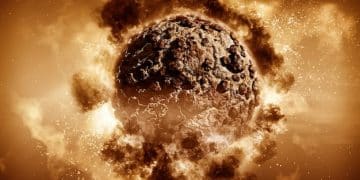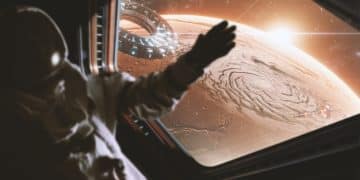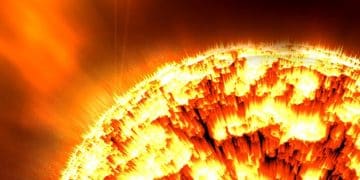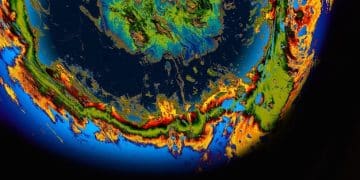Space Debris Impact: Risks to Satellites and Spacecraft
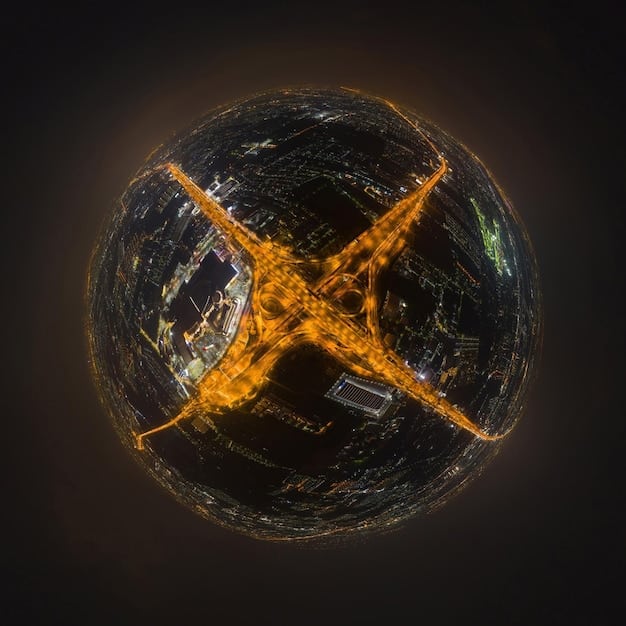
The impact of space debris poses a significant threat to satellites and spacecraft in Low Earth Orbit (LEO), potentially causing damage, operational failures, and even mission termination due to collisions with high-velocity fragments.
Navigating the cosmos comes with its own set of challenges, one of the most pressing being the increasing amount of space debris. The impact of space debris on satellites and spacecraft in Low Earth Orbit (LEO) is a growing concern that demands our attention.
Understanding the Growing Problem of Space Debris
Space debris, also known as orbital debris or space junk, is any non-functional, human-made object in orbit around the Earth. This includes everything from defunct satellites and rocket bodies to small fragments resulting from collisions and explosions.
Sources of Space Debris
The accumulation of space debris is primarily due to:
- Satellite explosions and breakups: These events create a large number of fragments that can remain in orbit for years.
- Collisions between objects: Even small pieces of debris can cause significant damage upon impact, leading to further fragmentation.
- Abandoned rocket stages: These large objects can persist in orbit for decades, posing a collision risk.
- Deliberate destruction of satellites: Anti-satellite (ASAT) tests generate substantial amounts of long-lived debris.
The Kessler Syndrome
The escalating amount of space debris raises the specter of the Kessler Syndrome, a scenario proposed by NASA scientist Donald Kessler. This theory suggests that the density of objects in LEO could reach a point where collisions become inevitable, creating even more debris and leading to a cascading effect that renders certain orbits unusable.
The situation is further complicated by the fact that even tiny fragments of debris, traveling at orbital speeds of several kilometers per second, possess enough kinetic energy to cause significant damage to operational satellites. The growing volume of space junk increases the probability of such collisions, posing a direct threat to space-based infrastructure and future space missions.
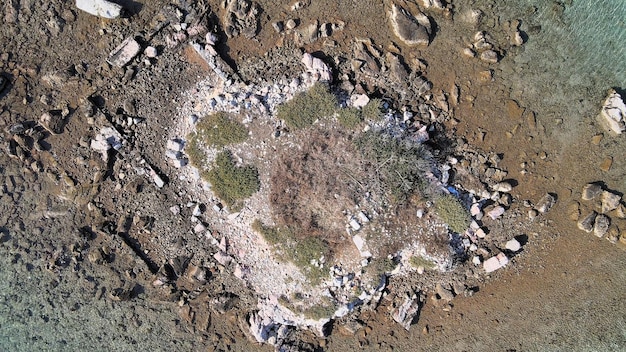
In summary, understanding the sources and potential consequences of space debris is crucial for developing strategies to mitigate the risks and ensure the long-term sustainability of space activities. The Kessler Syndrome serves as a stark reminder of the potential ramifications of unchecked debris accumulation.
The Risks to Satellites in Low Earth Orbit
Satellites in Low Earth Orbit (LEO) are particularly vulnerable to the impact of space debris. LEO, extending up to an altitude of 2,000 kilometers (1,200 miles), is a heavily utilized region of space, hosting a large number of operational satellites for various purposes.
Collision Risks and Damage
The primary risk is the potential for collisions with space debris. Even small objects, such as paint flecks or micrometeoroids, can cause significant damage due to their high velocities. Larger objects can completely destroy a satellite, leading to mission failure and the creation of even more debris.
Such collisions can result in:
- Operational failure: Damage to critical components can render a satellite inoperable.
- Reduced lifespan: Accumulation of minor damage can shorten a satellite’s operational life.
- Complete destruction: A collision with a larger object can obliterate a satellite entirely.
Impact on Satellite Services
Satellites in LEO provide essential services, including:
- Communications: Telecommunications, internet services, and data transfer.
- Earth observation: Weather forecasting, environmental monitoring, and disaster management.
- Navigation: GPS and other global navigation satellite systems.
Damage or destruction of these satellites can disrupt these vital services, with far-reaching consequences for society and the global economy.
The confluence of high satellite density and significant debris concentration in LEO substantially elevates the likelihood of collisions. The resulting damage not only jeopardizes individual satellites but also threatens the continued provision of crucial services that modern society depends on. This underscores the urgency for robust mitigation strategies to safeguard satellites and preserve access to space.
Strategies for Mitigating the Impact of Space Debris
Addressing the risks posed by space debris requires a multi-faceted approach, encompassing prevention, mitigation, and remediation strategies. International cooperation and adherence to best practices are essential for effectively managing this global challenge.
Prevention Strategies
Preventing the creation of new space debris is a crucial first step. This involves:
- Design for Demise (DfD): Designing satellites and rocket stages that can completely burn up upon re-entry into the atmosphere.
- Passivation: Depleting residual propellant and discharging batteries at the end of a mission to prevent explosions.
- Collision Avoidance: Implementing robust tracking and collision avoidance systems to maneuver satellites away from potential threats.
Mitigation Strategies
Mitigation strategies aim to reduce the growth of the existing debris population. These include:
- 25-Year Rule: Requiring satellites in LEO to deorbit within 25 years of the end of their mission.
- Deorbiting Systems: Equipping satellites with propulsion systems or drag augmentation devices to facilitate controlled re-entry.
- Improved Tracking: Enhancing space situational awareness (SSA) capabilities to better track and characterize debris objects.
Remediation Strategies
Remediation strategies involve actively removing existing space debris from orbit. This is a more challenging and costly undertaking, but potentially necessary to stabilize the debris environment. Several active debris removal (ADR) concepts are being explored, including:
- Tethered Deorbiting: Using long tethers to drag debris objects out of orbit.
- Robotic Capture: Employing robotic spacecraft with grappling arms or nets to capture and deorbit debris.
- Laser Ablation: Using ground-based or space-based lasers to vaporize small debris objects.
In essence, a combination of preventative actions, mitigation measures, and active removal technologies is essential to diminish the impact of space debris. These comprehensive strategies not only safeguard existing space assets but also pave the way for sustainable space exploration and usage for future generations.
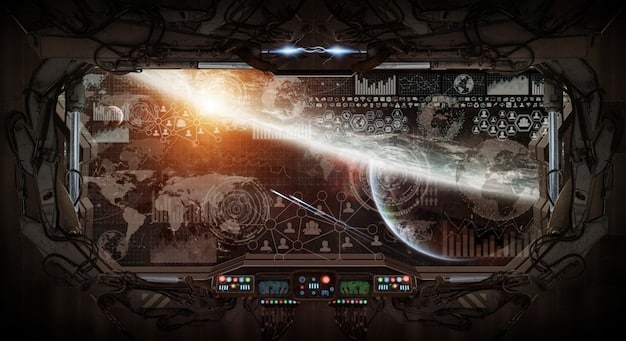
The Role of International Cooperation and Regulation
Addressing the issue of space debris is a global challenge that requires international cooperation and the establishment of comprehensive regulations. No single nation can solve this problem alone; a coordinated effort is essential to ensure the long-term sustainability of space activities.
International Agreements
Several international agreements and guidelines address aspects of space debris mitigation, including:
- The Outer Space Treaty (1967): Establishes basic principles for the exploration and use of outer space, including the responsibility to avoid harmful contamination.
- The Liability Convention (1972): States that launching states are liable for damage caused by their space objects.
- The Space Debris Mitigation Guidelines of the Committee on the Peaceful Uses of Outer Space (COPUOS): Provide voluntary guidelines for minimizing the creation of space debris.
Challenges in Implementation
Despite these agreements, there are challenges in implementing and enforcing space debris mitigation measures. The guidelines are voluntary, and there is no international body with the authority to regulate space activities and penalize non-compliance.
Furthermore, rapid advancements in space technology, the increasing number of actors involved in space activities, and the growing commercialization of space create new challenges for regulation. The emergence of mega-constellations of satellites, for example, raises concerns about collision risks and the potential for generating large amounts of debris.
The effectiveness of present international frameworks is being tested by the evolving space environment, requiring more stringent regulations, enhanced oversight mechanisms, and stronger incentives for responsible behavior. Such actions are vital to ensure adherence to space debris mitigation strategies and safeguard the shared resource of outer space.
Advancements in Space Debris Tracking and Monitoring
Effective tracking and monitoring of space debris are crucial for assessing the risks and implementing collision avoidance measures. Enhanced space situational awareness (SSA) capabilities are essential for maintaining a safe space environment.
Ground-Based Radar and Optical Sensors
Ground-based radar and optical sensors are used to detect, track, and characterize space debris objects. These sensors can provide valuable information about the size, shape, and orbit of debris, allowing for more accurate risk assessments.
- Radar: Can track objects in all weather conditions and during both day and night.
- Optical sensors: Provide high-resolution images of debris, allowing for better characterization.
Space-Based Sensors
Space-based sensors, such as telescopes and radar systems deployed on satellites, offer several advantages over ground-based sensors. They can provide a more comprehensive view of the debris environment, free from atmospheric interference.
These sensors can:
- Track smaller debris objects than ground-based sensors.
- Provide more accurate orbit determination.
- Continuously monitor the debris environment.
Data Analysis and Modeling
The data collected by ground-based and space-based sensors must be analyzed and modeled to predict the future trajectories of debris objects and assess collision risks. Advanced algorithms and high-performance computing are required to process the vast amounts of data and generate accurate predictions.
The refinement and growth of space debris tracking and monitoring technologies are essential for mitigating the risks involved. These developments provide important data for collision avoidance, promote the efficient use of outer space, and help guarantee the ongoing viability of satellite operations.
The Economic Impact of Space Debris
The presence of space debris has significant economic implications for satellite operators, insurance companies, and the space industry as a whole. The costs associated with debris-related risks can be substantial, impacting the profitability and sustainability of space activities.
Increased Operational Costs
Satellite operators incur increased operational costs due to the need for collision avoidance maneuvers. These maneuvers require fuel, which reduces the satellite’s lifespan, and can disrupt normal operations.
Additional costs include:
- Tracking and monitoring: Paying for space situational awareness (SSA) services.
- Insurance premiums: Higher premiums to cover the risk of debris-related damage or loss.
- Redundancy: Building and launching backup satellites to mitigate the risk of failure.
Impact on the Insurance Industry
The insurance industry faces significant challenges due to the increasing risk of space debris collisions. Debris-related incidents can result in large payouts, impacting the profitability of insurance companies and potentially leading to higher premiums for satellite operators.
Moreover, the lack of comprehensive data on the debris environment and the difficulty in assessing collision risks make it challenging for insurers to accurately price policies.
Long-Term Economic Sustainability
The long-term economic sustainability of space activities depends on mitigating the risks posed by space debris. Unchecked debris accumulation could lead to a cascading effect of collisions, rendering certain orbits unusable and hindering future space exploration and development.
In conclusion, the impact of space debris extends beyond the immediate dangers to satellites, encompassing significant economic ramifications for the entire space sector. Addressing these economic challenges requires proactive measures to reduce debris production, mitigate the effects of existing debris, and ensure the sustained economic viability of space operations.
| Key Point | Brief Description |
|---|---|
| 🛰️ Satellite Risks | Space debris collisions can cause operational failures and complete destruction of satellites. |
| 🚀 Kessler Syndrome | Increasing debris could lead to inevitable collisions, creating more debris in a cascading effect. |
| 🛡️ Mitigation | Strategies include prevention, like Design for Demise, and active debris removal (ADR) concepts. |
| 🤝 International Cooperation | Global coordination is essential for effective space debris management and regulation. |
Frequently Asked Questions
▼
Space debris consists of non-functional, human-made objects orbiting Earth. This includes defunct satellites, rocket bodies, and fragments from collisions or explosions.
▼
The increasing amount of space debris raises the risk of collisions, which can damage or destroy operational satellites and create even more debris.
▼
The Kessler Syndrome is a theory that suggests the density of objects in LEO could lead to a cascading effect of collisions, making certain orbits unusable.
▼
Mitigation strategies include preventing the creation of new debris, removing existing debris, and improving tracking and monitoring of debris objects.
▼
Space debris increases operational costs for satellite operators, affects the insurance industry, and threatens the long-term economic sustainability of space activities.
Conclusion
The impact of space debris poses a significant and multifaceted challenge to the sustainable use of outer space. Addressing this issue requires international cooperation, adherence to best practices, and the development of innovative technologies for debris mitigation and removal. By taking proactive measures, we can safeguard our space assets, protect vital satellite services, and ensure continued access to space for future generations.
